#Arsène Lupin Gentleman Thief
Text

From a young age, my Grandpa instilled in me the importance of working it fiercely and slaying like a diva.💁✨
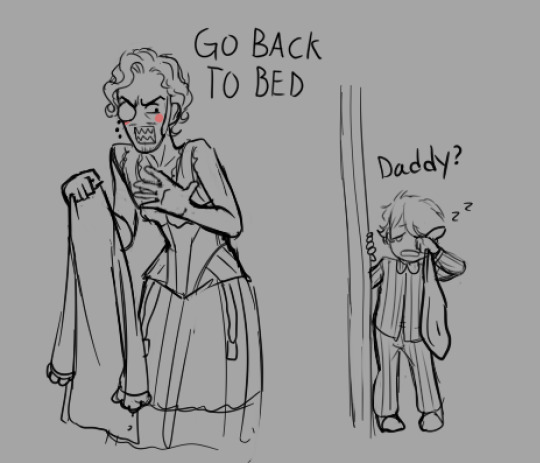
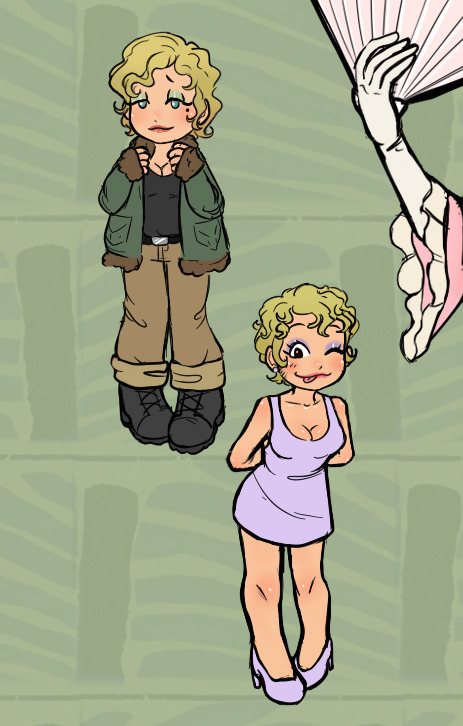
#RIP Maurice Leblanc you would have HATEDDDD these.#lupin iii#lupin the third#lupin the 3rd#arsene lupin iii#arsene lupin#Arsène Lupin Gentleman Burglar#Arsène Lupin Gentleman Thief#Arsène Lupin gentleman-cambrioleur#EDGAR LA DETECTIVE CAMBRIOLEUR MOMENT#arsene lupin ii#Lupin zero#LIKE KINDA?#my art
113 notes
·
View notes
Text

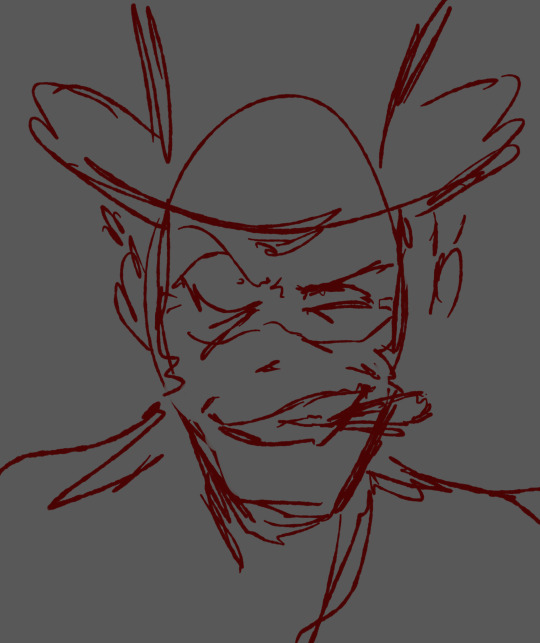
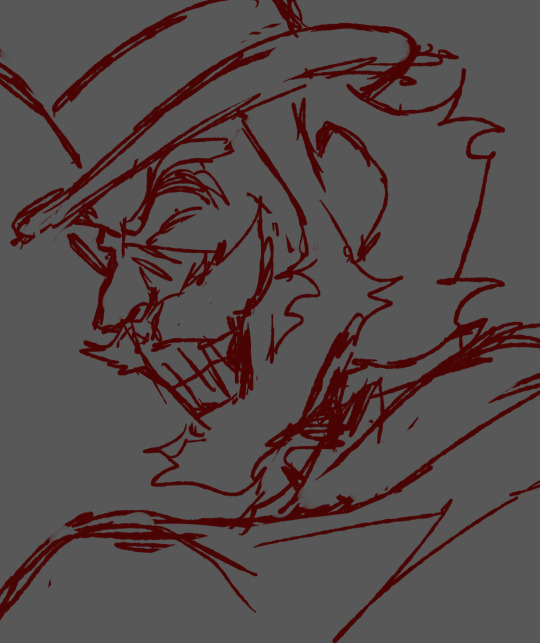
so uhh I love drawing my bbgirl doing silly expressions (+extra lupin issei sketch from lupin zero)
#arsene lupin#arsène lupin#leblanc lupin#maurice leblanc#gentleman thief#art#literature#lupin zero#lupin isei#lupin iii
60 notes
·
View notes
Text
Round 3, Match 3

[Image description: a versus graphic of Carmen Sandiego from Where in the World is Carmen Sandiego? and Arsène Lupin from the Maurice LeBlanc books. Carmen Sandiego wears a wide-brimmed red hat and a long, buttoned red coat. Lupin is depicted with a top hat and monocle. /End description]
#carmen sandiego#where in the world is carmen sandiego#arsene lupin#arsène lupin#polls#tournament poll#gentleman thief#phantom thief#gentleman thief tournament#round 3
180 notes
·
View notes
Text
// made a Google Drive folder for HD versions of some of Vincent Maillé's Illustrated Arsène Lupin for all your wallpaper needs

( Vincent Maillé's twitter and website, buy the book! )
#lupin blorbo bleebus#ooc; en coulisse.#[ will update the folder as i go along :^) ]#b: arsène lupin gentleman thief (vincent maillé)#vincent maillé
74 notes
·
View notes
Text
"The Enigmatic Elegance of Arsène Lupin: Maurice Leblanc's Timeless Tale Unveiled in Edgar Jepson's Transcendent Translation"

Arsène Lupin, penned by Maurice Leblanc and skillfully translated by Edgar Jepson, emerges as a captivating tale that weaves together elements of mystery, adventure, and wit. This classic work introduces readers to the enigmatic character of Arsène Lupin, a masterful and charming thief with a penchant for outsmarting both the law and his adversaries. Leblanc's narrative prowess shines through as he meticulously crafts a series of short stories, each unraveling Lupin's audacious exploits and ingenious schemes.
At the heart of the narrative is Lupin's charismatic personality, which transcends the conventional boundaries of a mere antihero. Leblanc successfully portrays Lupin as a multifaceted character, eliciting both admiration and curiosity from readers. The clever interplay between Lupin and the dogged detective attempting to bring him to justice adds an extra layer of suspense, keeping the audience on the edge of their seats.
Jepson's translation preserves the essence of Leblanc's original work, allowing English-speaking readers to savor the nuances of Lupin's escapades. The prose is elegant and fluid, capturing the vivid imagery of the settings and characters. The translation seamlessly transports readers into the world of early 20th-century France, where the allure of hidden treasures and daring heists unfolds against a backdrop of societal intrigue.
Arsène Lupin stands as a testament to Leblanc's narrative ingenuity, creating a timeless character whose charisma has endured through the ages. The stories within this collection not only showcase Lupin's cunning intellect but also explore themes of justice, morality, and the blurred lines between right and wrong. As readers embark on this literary journey, they find themselves irresistibly drawn into Lupin's web of deception, eagerly anticipating each twist and turn.
In conclusion, Maurice Leblanc's Arsène Lupin, skillfully brought to the English-speaking audience by Edgar Jepson, is a literary gem that transcends its genre. The charismatic antihero, coupled with the expertly crafted narratives, ensures that Lupin's legacy endures as a symbol of literary brilliance. This collection is a must-read for those who appreciate the art of storytelling and the timeless allure of a captivating rogue.
Arsène Lupin by Maurice Leblanc is available in Amazon in paperback 12.99$ and hardcover 20.99$ editions.
Number of pages: 305
Language: English
Rating: 8/10
Link of the book!
Review By: King's Cat
#Arsène Lupin#Maurice Leblanc#Edgar Jepson#French literature#Mystery fiction#Gentleman thief#Detective stories#Classic crime novels#Intriguing plot#Master of disguise#Adventure and suspense#Clever escapades#Witty and charismatic protagonist#Transcendent translation#Literary translation#French culture#Iconic character#Crime-solving#Fictional detective#Parisian setting#Elegant prose#Timeless storytelling#Thrilling narrative#Unconventional hero#Artful heists#Charming rogue#Vintage crime#Literary escapism#Classic detective fiction#Mysterious atmosphere
5 notes
·
View notes
Text
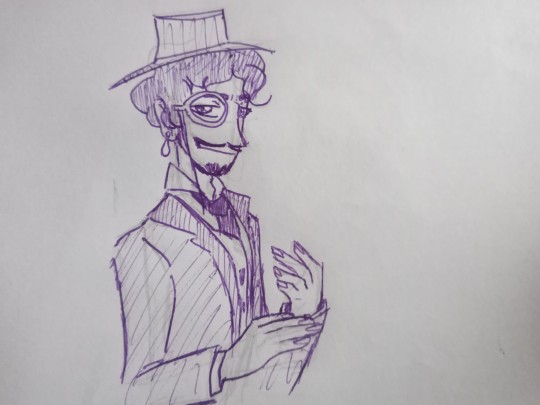
I finished reading Gentleman Cambrioleur. It was a funny read and it already paints a lot of important grounds for the character, I just wish Maurice LeBlanc didn't change point of views so often. I get so confused 🥲
[ IMG ID: A stylized pen-made drawing of Arsène Lupin, main character of the books by Maurice LeBlanc. The art is not painted, but the lineart is purple. Arsène Lupin is a man wearing a dark overcoat and a tie; he has a thin, black moustache and is growing a goatee. His hair is dark and curvy. He wears a hat, a monocule and small earrings. He's adjusting his sleeve. / END ID ]
21 notes
·
View notes
Text
Lupin being Ganimard's midlife crisis is so important to me
#Arsène Lupin#ganimard was like 'and for my crise de la cinquantaine i will become obsessed with a rising gentleman thief'#we're nowhere near zenigata levels obviously but it's still quite fun#and ganimard is fleshed out enough for us to actually care about his involvement with lupin beyond the fact that he's a cop#and thus represents the threat of the law within the narrative#already by the end of the third short story it's such an interesting relationship#lupin's whole plan hinging on whether or not ganimard recognises him + the bench reveal afterwards!!#sooooo so good
20 notes
·
View notes
Text
"The Enigmatic Elegance of Arsène Lupin: Maurice Leblanc's Timeless Tale Unveiled in Edgar Jepson's Transcendent Translation"

Arsène Lupin, penned by Maurice Leblanc and skillfully translated by Edgar Jepson, emerges as a captivating tale that weaves together elements of mystery, adventure, and wit. This classic work introduces readers to the enigmatic character of Arsène Lupin, a masterful and charming thief with a penchant for outsmarting both the law and his adversaries. Leblanc's narrative prowess shines through as he meticulously crafts a series of short stories, each unraveling Lupin's audacious exploits and ingenious schemes.
At the heart of the narrative is Lupin's charismatic personality, which transcends the conventional boundaries of a mere antihero. Leblanc successfully portrays Lupin as a multifaceted character, eliciting both admiration and curiosity from readers. The clever interplay between Lupin and the dogged detective attempting to bring him to justice adds an extra layer of suspense, keeping the audience on the edge of their seats.
Jepson's translation preserves the essence of Leblanc's original work, allowing English-speaking readers to savor the nuances of Lupin's escapades. The prose is elegant and fluid, capturing the vivid imagery of the settings and characters. The translation seamlessly transports readers into the world of early 20th-century France, where the allure of hidden treasures and daring heists unfolds against a backdrop of societal intrigue.
Arsène Lupin stands as a testament to Leblanc's narrative ingenuity, creating a timeless character whose charisma has endured through the ages. The stories within this collection not only showcase Lupin's cunning intellect but also explore themes of justice, morality, and the blurred lines between right and wrong. As readers embark on this literary journey, they find themselves irresistibly drawn into Lupin's web of deception, eagerly anticipating each twist and turn.
In conclusion, Maurice Leblanc's Arsène Lupin, skillfully brought to the English-speaking audience by Edgar Jepson, is a literary gem that transcends its genre. The charismatic antihero, coupled with the expertly crafted narratives, ensures that Lupin's legacy endures as a symbol of literary brilliance. This collection is a must-read for those who appreciate the art of storytelling and the timeless allure of a captivating rogue.
Arsène Lupin by Maurice Leblanc is available in Amazon in paperback 12.99$ and hardcover 20.99$ editions.
Number of pages: 305
Language: English
Rating: 8/10
Link of the book!
Review By: King's Cat
#Arsène Lupin#Maurice Leblanc#Edgar Jepson#French literature#Mystery fiction#Gentleman thief#Detective stories#Classic crime novels#Intriguing plot#Master of disguise#Adventure and suspense#Clever escapades#Witty and charismatic protagonist#Transcendent translation#Literary translation#French culture#Iconic character#Crime-solving#Fictional detective#Parisian setting#Elegant prose#Timeless storytelling#Thrilling narrative#Unconventional hero#Artful heists#Charming rogue#Vintage crime#Literary escapism#Classic detective fiction#Mysterious atmosphere
0 notes
Text
good to know Rocambole is the anti-Lupin: he turns less of an asshole as novels go by
#i love lupin so much i really do but he's a bastard sometimes#andddd i started reading rocambole#just to suffer bc only one book in Spanish#and it is the first one#and it has evil rocambole apparently#i'm more into gentleman thief things so let's see#rocambole#arsène lupin
0 notes
Text


Vincent Maillé’s illustrations for Maurice LeBlanc’s Arsène Lupin, Gentleman-Thief.
144 notes
·
View notes
Text


One of my silly art assigment for college, im very proud of how it turned out! I wanted to make it about one of my favorite lupin books "The crystal stopper".
Clarisse mergy and lupin, my beloveds <3
Translation: "Arsène Lupin in The Crystal Stopper"
54 notes
·
View notes
Text
Round 3, Match 1

[Image description: a versus graphic of Joker/Ren Amamiya from Persona 5 and Lupin from Lupin III. Joker has black hair and is wearing a silver eye mask, a black leather vest, a black suit jacket with long tails, and black pants, and he’s wielding a long wavy dagger. Lupin is wearing a red suit jacket over a blue shirt and pink tie with white pants, and he’s holding a pistol in one hand at his side. His other hand is in his pocket. He appears to be in his 30s and has dark brown hair with thick sideburns. /End description]
#joker persona 5#joker p5#persona 5#lupin iii#arsene lupin iii#arsène lupin iii#gentleman thief#phantom thief#gentleman thief tournament#polls#tournament poll#round 3
245 notes
·
View notes
Text
We all know that Saguru Hakuba's initials are a reference to Sherlock Holmes, which works when his given name is put before his family name. When he moves to Japan and now has his family name before his given name it matches up more with Herlock Sholmes, famous rival of Arsène Lupin, gentleman thief.
#hakuba saguru#kaitou kid#magic kaito#kuroba kaito#detective conan#also helps that KID is called The Heisei Lupin#it might not be on purpose but I like to think that it is#especially with how much gosho loves to make little puzzles out of peoples names that mean something
78 notes
·
View notes
Text
ROUND 1 MATCH 109

Arsène propaganda:
“True route of Code: Realize, but supports you unconditionally in all of the routes. Literally THE gentleman thief, dedicates his whole life to fulfilling Cardia's wish to be able to touch people without them melting and a shenanigan KING”
Asmodeus propaganda:
"Vote Asmo. He seduces everyone including a snake called Henry. Very pretty. Does his brothers nails. Very queer with his bf Solomon"
#Arsene Lupin#Arsene Lupin Code Realize#Code: Realize#Code Realize#Asmodeus#Asmodeus Obey Me#Obey Me#obey me shall we date#Round 1#MDDC 2
39 notes
·
View notes
Text
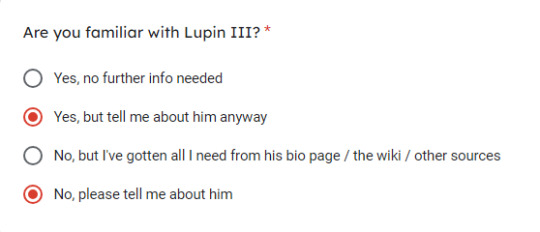
checked one of these two boxes? never fear, this post is for you!
below the cut is an extensive recap of not only lupin himself, but the context he's set against and the other major characters introduced throughout the franchise. I don't imagine this will answer every single question, and I'm always more than happy to expand on this over on discord or something, but this is an easy peasy starting point to link to
so, let's get started!

Who are the Lupin family?
The first notable Lupin was Arsène Lupin, phantom thief of France. He operated mostly within the Paris area until his reputation spread, at which point he began to become more of a worldwide thief. During his active years he kept a journal, in which he documented his heists and what treasure was stolen. This is passed down from generation to generation, and is currently in the possession of Lupin III. During this time he also wrote a Thieves' Rulebook, which has since been stolen by Lupin III⁶.
As he aged, Arsène's health began to decline, and he turned his attention from stealing treasures to stealing organs, most often hearts to replace his own failing one. He retired to his Paris mansion and spent his days laying in his bedside, surrounded by beautiful women who he often abused and his personal surgical team. He collected his victims through a variety of ways, most commonly dubiously-legal trick contracts he'd have them sign under false pretenses, usually pertaining to money or the inheritance of his grand estate. Arsène even tried this trick on his own grandson¹, but he saw through it and used a similar trick ink to void his signature.
Arsène was also personally responsible for training both his son and grandson in the ways of master thievery, and started passing down his skillset as soon as the children were able to comprehend instructions. Lupin III, Arsène's grandson, claimed that he'd been getting trained as a thief for longer than he could remember, and had started his training long before he'd learned to write his own name². Arsène generally considered his son, Lupin II, to be a failure and disappointment to the family, and the two did not like each other. This is potentially why they lived on separate sides of the globe, with Lupin II choosing to build his home in Tokyo instead of Paris.
Arsène is dead.
After Arsène came Lupin II, who was successful in his own right but is often overshadowed by the grander feats of his father and son. He removed his son, Lupin III, from Arséne's mentorship and encouraged him to walk the straight and narrow, away from a life of thievery². He left young Lupin III to attend school within Japan and live in his Tokyo mansion with his housekeeper and lover, Shinobu, while he continued his worldwide thefts and building of the Lupin Empire. A more headcanon-heavy take on that particular endeavour can be found here. This left little opportunity for family bonding, and while Lupin III did love his father, it's hard to feel especially close to him when he missed out on just about every dramatic life event a child can have.
Like all Lupins, he was a notorious womaniser and loved the ladies' attention, but he was considerably kinder than Arsène was. He was the first gentleman thief of the family, and he taught his son the importance of gentlemanly behaviour and never ignoring a woman in trouble. It's a lesson his son took to heart.
Lupin II is dead.
And finally, Lupin III. He left home and struck out on his own as an early teenager, accompanied by his Walther and his best friend Jigen³ (more on him later). Since then, Lupin III has made a name for himself as the world's best and most wanted thief, and it's his personal goal to not only live up to his grandfather's legacy, but surpass it. To this end, he likes to target items that Arsène documented himself as being unable to steal, such as the Bresson Diary⁴ or the Louvre's Mona Lisa painting⁵. He despised who his grandfather became, so tends to lean into the mythologised idea of 'the phantom thief of France', rather than connect those legends with the unpleasant old man he remembers.
Like the two generations before him, Lupin travels all over the world to steal whatever he's set his sights on, and will infiltrate cults, gangs, government buildings and billionare's homes alike. Nowhere is safe from him.
So that's his backstory. But who is Lupin III?
" I've heard about him. With a Walther in one hand, he's a diabolical thief who never misses his mark. ... We can't run from Lupin III. "¹¹
As said above, Lupin III is recognised as both the best and the most wanted thief in the world. He's so notorious that he's collected his own fair share of copycats and imitators, though Inspector Zenigata is adept at separating these crimes from those of the real Lupin.
Though Lupin acts silly and lighthearted most of the time, this is a performance he uses to hide his incredible intelligence and vast array of skills. He has shown himself to excel in many areas, including the piloting of any and all possible vehicles, chemistry and gas creation, and general gadget invention. He hides miniature explosives²⁶, smoke bombs, and various tools³³ all over his body, including in a fake tooth and in a hairpiece he wears over his real hair. He can also slip things into or out of the pockets of those he passes, even when given only a split second to do so without detection.
Perhaps most confusing about Lupin's mind is his inability to dream, instead seeing nothing but a void. This was once described as the conscious of an idiot or a god³².
More than anything, Lupin hates the feeling of boredom. His skill is so exceptional that simply stealing things isn't thrilling enough: he needs to find ways to make it more difficult for himself. This is why he cherishes his rivalries with Fujiko and Zenigata - both push him to do his best and create plans to circumvent the both of them, and they add the much-needed thrill to his game. That's how he's come to see his thieving career: as a game.
And much like every good game, he needs players. That's where the Lupin gang come in.
What is 'the Lupin gang', and who's in it?
The Lupin gang is the colloquial name given to Lupin and his friends, the "approved players" he's collected and allowed to become a permanent part of his life. The exact number of people involved in each heist varies, but it can be assumed that all of them have ways of contacting each other should things ever go seriously wrong. Lupin is protective (some might say possessive) over them, and will kill anyone who threatens or attempts to take their lives.
The known friends are as follows:
Daisuke Jigen. Lupin's best friend and closest partner. Though the two of them do do occasional solo work, it's more often safe to assume that if you can find one, the other won't be far behind. He's been shown to have been taught several of the Lupin family skills, including flawless disguise and voice mimicry⁸, and is so close to Lupin that he's been mistaken for his lover⁹. He knows just about everything there is to know about Lupin.
Outside of this, Jigen is considered to be the single best marksman in the world, and is capable of hitting a penny from a hundred meters away¹⁶. In fact, it was his gun skills that caught Lupin's attention in the first place, back when they were attending the same school².
Goemon Ishikawa XIII. A samurai wielding the legendary sword Zantetsuken, capable of cutting through anything. They met when Goemon attempted to kill him²⁰ and later ended up slicing his car cleanly in half²¹, and Lupin has considered him part of the gang ever since.
However, Goemon has the least patience for Lupin's tricks or deception, and is always the first to reject a job and leave if he doesn't like its end goal (usually something to do with impressing a woman). He also devotes a lot of his time to his solo training, travelling to a remote area and honing his skills there until he feels ready to return.
Fujiko Mine. An exceptionally beautiful seductress, spy, and thief. Lupin is head over heels for her and will do anything she asks of him, usually in return for something like a kiss. Fujiko often betrays him once he's finished being useful to her current plan, leaving with the treasure and letting Lupin find his own way out of whatever situation he's gotten himself in. Her betrayals are forgiven by Lupin every time - he's even said they're something he looks forward to²⁷ - but the others (most notably Jigen) don't trust her and will become frustrated by Lupin's infatuation. This has no effect on Lupin, however, who was the one to initiate this rivalry between them²⁸ and has, on occasion, been able to preempt her double crossing²⁹ and outsmart her in the process³⁰.
Fujiko once said that the two were once lovers, though she left him¹⁹, and the same thing happened during their later relationship³¹. I interpret this second relationship as a marriage given the imagery surrounding it throughout Part 5, but canon is once again unclear on this and I'm keeping it deliberately flexible.
Koichi Zenigata. Though he's not an official part of Lupin's affiliates, being on the opposing side of the law to them, he's someone Lupin has come to care about deeply and still considers part of his group regardless. The two of them have such a close relationship that Zenigata has been mistaken as Lupin's boyfriend by both Rebecca²² and Ami²³, and he once declared his intention to arrest Lupin's heart²⁴.
He is devoted to arresting Lupin, and becomes very depressed whenever he's removed from the Lupin case or believes Lupin to be dead²⁵.
Any other important people we should know about?
Rebecca Rossellini. An Italian heiress most known for her acting career. They first met when he saved her life from an overzealous fan threatening to bomb the train she was trapped on⁷, and Lupin proposed marriage not long afterwards. Though their marriage was later revealed not to have any legal binding¹⁷, he allowed her to keep his last name and use it if she wished. She remained in Italy when he left.
Despite being the one to propose the initial wedding, he has no romantic / sexual feelings towards her.
Laetitia Bresson. The granddaughter of famous archeologist, Professor Bresson, and co-protagonist of Lupin III: The First. Her grandfather worked alongside the original Arsène Lupin to design the Bresson Diary's complex lock, something that required both Lupin III and Laetitia to eventually open. Though he initially found himself distrusting and clashing against her, Lupin soon warmed to her and worked alongside her to find and stop the ancient weaponknown as the Eclipse.
Despite wanting to go with Lupin and asking if he would take her along, he promised to reunite them in five years and encouraged her to attend Boston University⁴.
Clarisse de Cagliostro. The young ruler of the Grand Duchy of Cagliostro, and someone he met early on in his thieving career. They reunited ten years later during The Castle of Cagliostro, where Lupin aimed to rescue her from her forced wedding and reveal the truth behind the estate's lost treasure. Though she fell in love with him and wanted to come along on future travels, Lupin rejected her and insisted she stay behind in the light, rather than become "dirty" like him¹⁹.
However, he knows that she is willing to shelter him in Cagliostro should he ever need to fly under the radar, and he is similarly willing to aid her with any issue she may face in the future.
Ami Enan. An incredibly talented hacker, and someone Lupin enlisted the help of in order to rob Dark Web giant Marco Polo of their money¹⁰. After helping her to explore and trust the outside world, he encouraged her to apply to boarding school and live a more normal life. He has since cut ties to ensure her safety and to discourage any further criminal involvement.
Albert d'Andrésy. Someone who was once a potential rival to Lupin and received thief training from Arsène after Lupin III's move to Japan¹. Despite this, Lupin considers himself far above Albert's level and holds nothing but distaste for him.
Goro Yatagarasu / Yata. Zenigata's assistant, who dutifully follows him everywhere the Lupin chase leads. He doesn't always understand the complexities of Lupin's game and Zenigata's responses to it.
For OCs and specific canon portrayals of the above muses, please check my connections page! This section only details the canon connections for the benefit of those unfamiliar with the source material, and thus won't provide a holistic view of my Lupin and his extensive web of relationships.
How did they all meet?
Canon is mixed on this one, and each writer has their own preferred takes. While I, for example, tend to default to Lupin Zero canon for Lupin and Jigen (because it's cute), this is deliberately kept flexible and open to change depending on whose Jigen I'm writing with. Same goes for the others, too.
Basically: don't worry about it unless you intend to (or already do) write one of the above muses. All that matters is that they met.
What's the public's perception of Lupin? What does the layman know?
Again, canon is a little confused on this.
Sometimes Lupin is able to use the Clark Kent disguise of a pair of glasses and get away with it¹¹, implying that he is really living up to the "phantom thief" title and can't be casually recognised by face alone. Sometimes he doesn't even need to hide his appearance, people just don't know who he is until he's introduced¹². Other times, he's shown to have legions of fans¹³ and scrapbooks of his every newspaper appearance¹⁴ and claw machine plushie merchandise¹⁵, displaying his face all over the place. Whether or not your muse can recognise his appearance, I leave up to you.
However, what does remain consistent is that Lupin is more loved than he is feared, a successful charmer with the ladies and somewhat of a celebrity (though Lupin himself hates being referred to as such).
What's law enforcement's perception of Lupin? Is there any difference in what the regional police know, versus interpol?
The Lupin case is highly classified, with Zenigata being its lead and the one with control over which details are shared. Regional police have a bigger tendency to disregard Lupin as a threat and insist that their surveillance alone will be enough to stop him, while interpol take him more seriously and have a better understanding of what he's capable of. Both sides lack an understanding of the nuances of Lupin's game, as well as the unspoken rules both he and Zenigata follow during their chase.
What's Inspector Zenigata's perception of Lupin? What does he know?
Zenigata's knowledge rivals even Jigen's. He knows the scent of Lupin's preferred cologne, his cars and their license plates (not that that's too difficult to remember: it's 03LPN33¹⁷), his common escape patterns, his handwriting and the type of cardstock used for all genuine calling cards, and is most adept at recognising his disguises. He is the only member of law enforcement who stands a real chance at arresting Lupin, and has made it his life purpose.
A lot of this knowledge is thanks to his many tireless years on Lupin's tail, slowly learning all of the thief's tricks and self-imposed rules, but Zenigata is also a genius inspector. He can catch any criminal who's not Lupin, and has even caught and imprisoned Lupin many times, stating over one hundred captures¹⁸. Unfortunately for Zenigata, Lupin has proven himself just too good at breaking out, and has never managed to contain him in a prison he couldn't eventually find his way out of.
What Zenigata wants most is for Lupin to serve his time in prison and pay back his debt to society. Lupin, of course, knows this, and has exploited that desire to manipulate Zenigata's emotions, such as getting him to cry so he'll walk away from Lupin's prison cell and give him an opportunity to escape²⁶.
What's the underworld's perception of Lupin?
The underworld's perception of Lupin isn't the most positive thing, given that he's often turned his skills against his fellow criminals and menaced gangs, organised syndicates, and people he generally considers to be "worse" than him. His skills are undoubtedly impressive and a source of reluctant admiration, and thus many within this circle seek to deceive or exploit Lupin's talent for their own gains. This plan rarely works in their favour, however.
Some people instead want Lupin dead, and have attempted this in a variety of ways. Sending hitmen simply won't work, not as long as he has Jigen and Goemon by his side, and so the craftier among them have learned that it's much more effective to turn his own people against him. As was once said: They are the best players in the world. It's nearly impossible to kill them. The only one who can kill Lupin is Jigen.¹⁶
When is Lupin III set?
Lupin and co. are frozen in time, and been shown in various eras throughout the franchise (with the most modern being Part 5, with its cryptocurrencies and BitMoney). For this reason, I generally find it easier to set him in the default era of whoever I'm writing with, or just assume it's "modern day". The time period doesn't really impact how I'd portray Lupin, so it's not massively important.
However, Lupin as a character was born somewhere around the late thirties / early forties, and this is reflected in certain possessions his character owns. For example, his favoured gun is a Walther P38, something that was only produced from 1939-45 and is definitely considered outdated by today's standards. Lupin Zero shows that this gun originally belonged to his father, Lupin II, and was given away as a parting gift once he set off on his own³.
Citations.
¹ Lupin Zero, Ep. 3: The Grandson of the First Vies for Succession
² Lupin Zero, Ep. 1: Young Lupin Meets a Wolf
³ Lupin Zero, Ep. 6: Young Lupin Claims the Title of The Third
⁴ Lupin III: The First (2019)
⁵ Lupin III Part 2, Ep. 115: Mona Lisa Smiles Twice
⁶ Lupin III Part 1, Ep. 20: Catch the Fake Lupin!
⁷ Lupin III Part 4, Ep. 26: Non-Stop Rendevous
⁸ Lupin III Part 5, Ep. 7: His Name is Albert
⁹ Lupin III Part 5, Ep. 2: The Lupin Game
¹⁰ Lupin III Part 5, Ep. 1: The Girl in the Twin Towers
¹¹ Lupin III Part 4, Ep. 15: High School Undercover!
¹² Lupin III Part 4, Ep. 2: The False Fantasista
¹³ Lupin III: Princess of the Breeze (2013)
¹⁴ Lupin III Part 5, Ep. 17: Introducing Detective Jim Barnett III
¹⁵ Lupin III: Dragon of Doom (1994)
¹⁶ Lupin III: Seven Days Rhapsody (2006)
¹⁷ Lupin III Part 4, Ep. 12: The Italian Dream (Part Two)
¹⁸ Lupin III Part 2, Ep. 72: The Skateboard Murder Mystery
¹⁹ Lupin III: The Castle of Cagliostro (1979)
²⁰ Lupin III Part 1, Ep. 5: The Coming of Goemon the Thirteenth
²¹ Lupin III Part 1, Ep. 7: A Wolf Calls a Wolf
²² Lupin III Part 4, Ep. 1: The Marriage of Lupin III
²³ Lupin III Part 5, Ep. 4: Zenigata's Pride and the Desert Dust
²⁴ Lupin III Part 5, Ep. 24: Just Then, An Old Buddy Said Something
²⁵ Lupin III: The Fuma Conspiracy (1987)
²⁶ Lupin III: Operation Return the Treasure (2003)
²⁷ Lupin III: Farewell to Nostradamus (1995)
²⁸ The Woman Called Fujiko Mine, Ep. 1: Great Thief Vs. Female Phantom Thief
²⁹ Lupin III: Jigen's Gravestone (2014)
³⁰ Lupin III: Blood Seal - Eternal Mermaid (2011)
³¹ Lupin III Part 5 closing: Seine No Kaze Ni (Adieu)
³² Lupin III: The Mystery of Mamo (1978)
³³ Lupin III: Sweet Lost Night (2008)
#▸ out of character#took me a full two days but it's FINISHED !!!! come get y'all lupin iii information
29 notes
·
View notes
Text
AKECHI GORO — PERSONA 5 NAME ANALYSIS
Major p5r spoilers, minor “The Boy Detectives Club” spoilers.
First and foremost, I’m starting with Akechi because I thought his name was the most obvious, so I know the references in his name better. I will be making a post about Joker too, and hopefully more if I find enough material.
Akechi, meaning wisdom and intellect, Goro meaning “Fifth son.”
You might think that it was smart of the persona devs to name him Akechi for this reason, but it actually goes far deeper than that. (There’s reason for the name Goro too!)
(i promise this is relevant) Edogawa Rampo is a Japanese author who is highly important to mystery and thriller genre. He lived through the 19th-20th century and wrote many books considered classics.
Being a mystery writer, of course Edogawa had a main detective character. Known in the stories as “Japan’s greatest detective” is Akechi Kogoro, a private investigator inspired by Sherlock Holmes. That being said, naming your detective character “ Akechi” is pretty much equivalent to naming your detective character “Holmes.” Funny, right?
Akechi Kogoro is undeniable a genius, but quite eccentric. (For any BSD fans, the character Rampo is somewhat based off of Kogoro!) He appears in MANY of Edogawa’s books, as well as Edogawa’s juvenile fiction series, The Boy Detectives Club. Kogoro is a master of disguise, particularly good at disguising as young women. (Perhaps explaining Goro’s more typically effeminate appearance?)
Of course, Akechi Goro in Persona 5 is inspired by Akechi Kogoro, but it goes farther than that! I believe Goro is specifically based off of Kogoro in “The Fiend Of Twenty Faces,” the first book in Edogawa’s juvenile fiction series. The fiend of twenty faces is a gentleman thief based off of Arsène Lupin. I don’t want to spoil his name, So I’ll be calling the gentleman thief Kichi. Kichi and Kogoro have a relationship of mutual respect despite being rivals. Kichi is particularly well known for a character inspired by him, that character being Joker from Persona 5. I’d say Kichi is a notably worse person considering he threatened a group of ten year olds, but thats another story.
I won’t get too into whatever Kichi has going on since that’s more related to Joker than Goro, but you get the idea. Initially however, Kichi was going to be called “The phantom thief of twenty faces” but it was ruled out because… It wasn’t appropriate enough for kids..? Regardless, Joker and Goro are clear parallels to Kichi and Kogoro, from Mutual respect to their rather dramatic rivalry.
SECTION TWO - Akechi Goro & Akechi Mitsuhide
Goro’s name holds a genius double meaning — The other being historical figure Akechi Mitsuhide. Considering this is based on reality rather than fiction, this part may be a bit disturbing. I’ll be using Goro for Akechi Goro and Akechi for Akechi Mitsuhide, because it feels wrong to use his given name.
PS: Im a random canadian teenager, Please tell me if i got any history wrong!!!
Akechi was a samurai in the Sengoku period, but also a grand traitor. Best known as Oda Nobunaga(One of the three great unifiers of Japan)’s killer. Akechi was Oda’s bodyguard, but rebelled against him and forced him to commit seppaku, which is essentially suicide. Goro’s use of mental shutdowns is likely a reference to this, as is his rebellion against the Phantom Thieves.
SECTION THREE - Crow, Kuro, and Karasu.
Goro’s codename “Crow” is pronounced in Japanese as “Kuro”, which is “coincidentally” also the word for black. Because of this, as soon as the Black Mask was mentioned (i had already been spoiled on Goro’s codename) I immediately knew it was going to be him.
Crows represent misfortune and death, but also self-reflection and intelligence.
And finally, something that was most likely unintentional but I found funny nonetheless. When Akechi first teams up with the Phantom Thieves, he suggests his codename be “Karasu”, meaning crow. The other members suggest Crow instead since they all have english codenames. The first time (I think?) Joker is given an official name is in a spin-off manga, in which they call him Akira Kurusu. It probably means nothing, but I found the idea of codename Karasu working with Kurusu pretty funny, so I decided to mention it anyway.
That’s all I caught on to!! Let me know if I got anything wrong :)
#WAHHHH#So. many. words#i have so many thoughts on p5 naming choices….#persona 5#persona 5 royal#p5r#goro akechi#akechi goro#edogawa rampo#character analysis#kind of ?#name analysis#joker persona 5#i think goro is overrated just a lil secret….#but hes undeniable an excellently written character and his name references are SOOO good#classic lit mention and i go wild#cross posted on tiktok#riri ranting
34 notes
·
View notes